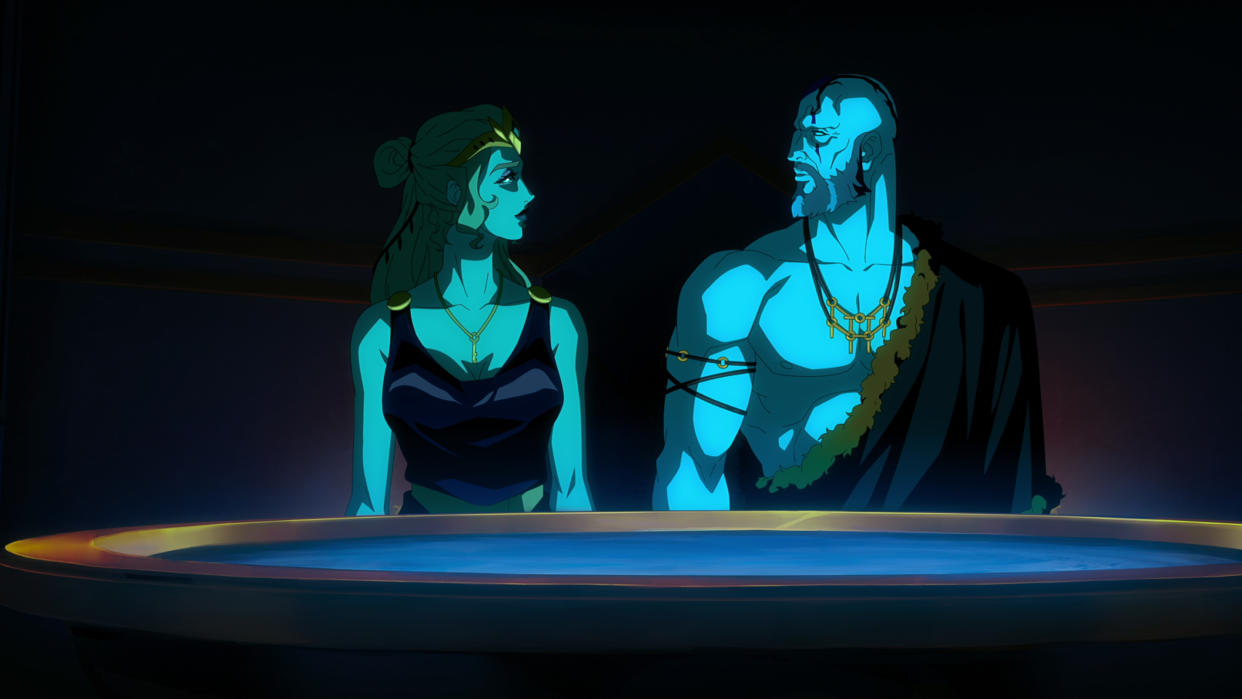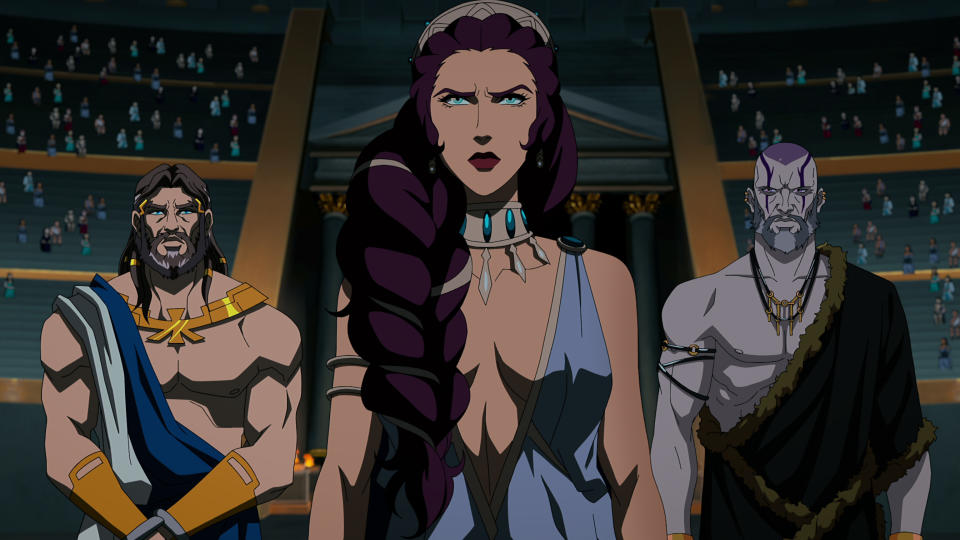Why ‘Blood of Zeus’ Is More Interested in Riffing on Greek Mythology

- Oops!Something went wrong.Please try again later.
For many ’90s kids, Hades, god of the Underworld, is a funny yet lame villain who is just jealous of his brother Zeus. Whether it’s “Hercules” or the “Clash of the Titans” remake, the Greek god tends to be portrayed as just an analog for Satan. That’s not the case with “Blood of Zeus”; for creators Charley and Vlas Parlapanides, it was important to reclaim the original vision of the god of the Underworld.
“Hades was not the devil. He was actually described in many stories as being very fair and just,” Charley Parlapanides told IndieWire. The second season of “Blood of Zeus” (now streaming on Netflix) continues where the first season left off, as Olympus reckons with the shocking death of Zeus. There’s also the matter of Hades allying himself with the first season’s villain, Seraphim, as revealed in a post-credits scene. This last bit prompted concerns from fans that the Powerhouse Animation show would follow the trope of a villainous Hades because of his association with the Christian devil. Luckily, that is not the case. “We feel he’s an antagonist,” Parlapanides continued. “We weren’t going to depict him as the devil, but he wants what he wants, as do lots of other gods. Everyone’s just fighting for their own interest.”
More from IndieWire
Hades’ plan is not to take over Olympus or even to leave his home in the Underworld. All he wants is to be with his wife Persephone, who is forced to abandon her home and her family for most of the year as she brings spring to the surface, only allowed in the Underworld during the winter months. This is the biggest and boldest departure from the established Greek myths, and where the season is most successful story-wise. In the original accepted myth, Hades kidnaps Persephone and forces her to stay with him, but “Blood of Zeus” portrays their love as genuine and reciprocal. “Let’s have them be a couple where they have each other’s back and they truly love each other,” said Vlas Parlapanides. Part of the reason this portrayal works is that we spend a good portion of Season 2 on Hades’ perspective, making him a sympathetic character with reasonable hopes and dreams.
Hades still does enough bad things to become the wrathful villain we know from other adaptations, but that comes after we understand his plight and the reasoning behind his actions. “It’s very important to us to stay in the spirit of the mythological tale and not deviate too much from it,” Charley Parlapanides said. “If you truly love someone and for thousands of years you have to be separated from them, your children separated from their mother, what does that do to you? Hades is sometimes described as lonely, but he is also married, so we used that to craft this version of the myth.”

That is the key to the series’ approach to Greek mythology. From the beginning of the first season, the Parlapanides brothers have looked at the gods’ actions in the myths and made enough changes to fit their story while honoring the essence of who the gods are as characters — not dissimilar to how the author of “Vinland Saga” approaches real-life characters in his fictional manga. Take the myth of Hades kidnapping Persephone, in which Persephone’s mother, Demeter, is distraught by Persephone’s kidnapping and threatens to stop the seasons and kill all life on Earth, which leads to Persephone being allowed out of the Underworld for six months a year. In “the show”Blood of Zeus,” however, this action is portrayed less as a heroic rescue and more as a jealous, bitter mother forcing her daughter to abandon her happiness and family to be with her. “We use the original stories as source material and then try and ask what they reveal about this deity,” Charley Parlapanides explained. “We wanted to spin the tale a little bit.”
“Blood of Zeus” is, at the end of the day, a family story. Part of that family are Hades and Persephone’s kids, which includes Zagreus. Gamers will recognize the name from the protagonist of the award-winning game “Hades,” the impetus for the cameo. “I absolutely love that game, my daughter and I played it,” Charley Parlapanides said. “We knew we had to show Zagreus because that’s who you play in the game, so we made sure we included him in a small scene.” The inclusion of the character also serves a function, showing that Hades’ family is a happy and loving one — unlike the rest of the bickering and warring gods.
It also helps make the Underworld feel like a vast, lived-in place. This season adds many characters, locations, and creatures, but every time it cuts to the Underworld, it feels like its own unique and separate ecosystem, a huge sandbox with different locations, different sets of characters, and more. “We’ve always felt Season 2 would be spent in the Underworld so we really wanted to build it out, take advantage of animation because you couldn’t afford to do it in live-action,” Vlas Parlapanides added.
New to animation, the brothers are appreciative of the medium’s collaborative process. A way they show their appreciation for the crew is by including concept art and storyboards during the closing credits of every episode. This was an idea from Season 1 director Shaunt Nigoghossian. “We just wanted to include their work as a thank you to the artists,” said Charley Parlapanides. “Animation is a marathon process, and we felt it was like a really nice way to just give a little tip of the hat and say thank you.”
The Parlapanides hope to spend more time in the Underworld, to show more locations within that world and even its unique pantheon of gods. But they also want to explore more worlds within this universe. “We would love in future seasons to eventually get to Atlantis and see Poseidon and his son,” Charley said.
The brothers’ original pitch for the show was for five seasons, which would have a definitive end to the story. “There’s no end-time story in Greek mythology, no armageddon or Ragnarok, so we thought it would be cool if these five stories build up to what happened to the gods and why they no longer exist,” Charley Parlapanides said. “After working on this show all these years, I don’t know if I want to see the end of the world and the gods anymore.”
Best of IndieWire
The 13 Best Thrillers Streaming on Netflix in May, from 'Fair Play' to 'Emily the Criminal'
The Best Father and Son Films: 'The Tree of Life,' 'The Lion King,' and More
The 10 Best Teen Rebellion Films: 'Pump Up the Volume,' 'Heathers,' and More
Sign up for Indiewire's Newsletter. For the latest news, follow us on Facebook, Twitter, and Instagram.

